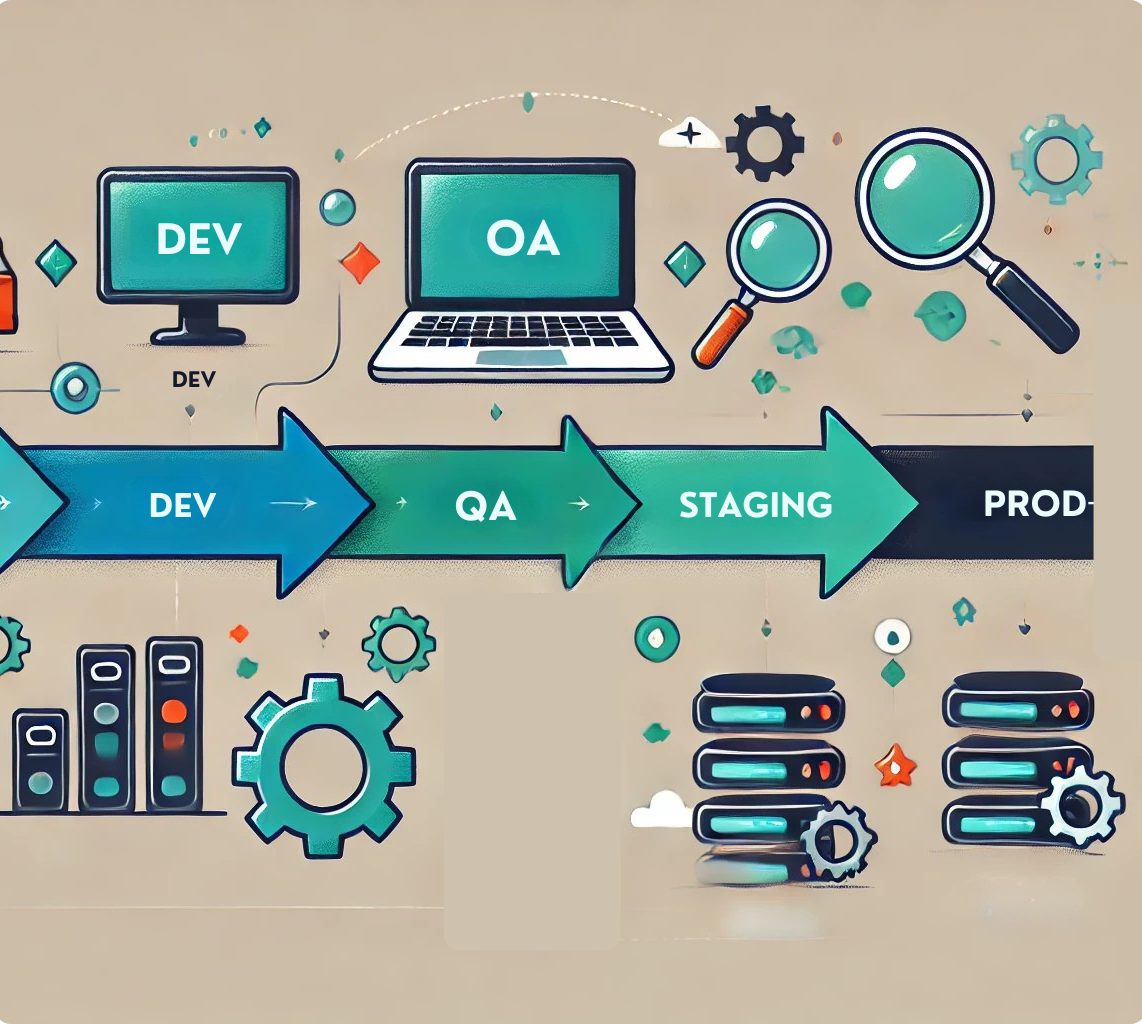
Getting Started with Terraform: Basics, Modules, and State
Terraform is the cornerstone of modern infrastructure automation. This guide introduces you to Terraform's core principles—defining infrastructure as code, working with reusable modules, managing state files, and structuring projects for scale. Whether you're building your first EC2 instance or organizing environments with Terragrunt, this article will help you lay the foundation for scalable and maintainable Infrastructure as Code.

Mastering Environment Management: Structure for Scale
Effectively managing multiple software environments—such as development, QA, staging, and production—can make or break a project's success. Imagine deploying your latest code directly to production due to the lack of a test environment. Everything seems fine until a small typo brings down your entire infrastructure the next day. In this guide, you'll learn how to build a scalable environment strategy to prevent scenarios like this. We'll explore clearly defining each environment's role and requirements, establishing a branching strategy that maps directly to your environments, maintaining parity across environments to avoid deployment surprises, and implementing automation to streamline deployments and reduce drift. Whether you're new to structured environments or looking to enhance your current multi-cloud pipelines, this guide provides the foundational framework you need to streamline your workflows and boost your team's productivity.

Supercharge Your Git Repo: Branch Protection, Pipelines, and Artifacts
A well-organized Git repository is more than just clean code—it’s the foundation for scalable automation. In this article, we explore three high-impact ways to supercharge your Git repo: using protected branches to control change, CI/CD pipelines to automate delivery, and artifact management to create reliable builds. Whether you're a solo developer or part of a growing team, these strategies will help you reduce risk, increase deployment confidence, and level up your infrastructure game.

Start Small: How to Begin Your Infrastructure Automation Journey
Infrastructure automation can feel overwhelming—like staring at a dense forest. Start small, choose smart tools, and build toward scale one step at a time.

Three Steps to Prepare Your Environment for Automation
Automation is a powerful tool for improving efficiency, but many organizations struggle to implement it successfully due to an unprepared environment. Without the right foundations, automation efforts can lead to inefficiencies, security risks, and system failures. In this guide, we break down the three critical steps to ensure a smooth transition to automation: implementing Source Control Management (SCM) to manage automation code, deploying a configuration engine to standardize infrastructure, and gathering network and infrastructure data for informed decision-making. By following these steps, you’ll create a stable, scalable automation environment that enhances reliability and performance.


What is Infrastructure as Code? Benefits and Key Concepts
Infrastructure as Code (IaC) is transforming how organizations manage computing infrastructure by automating and codifying the process. This article explores the key concepts and benefits of IaC, such as improving consistency, scalability, and reducing errors by treating infrastructure setup like software development. It compares declarative and imperative IaC approaches, highlighting tools like Terraform, Ansible, and Pulumi. Learn how IaC enables efficient infrastructure management, enforces best practices, and integrates seamlessly with modern DevOps pipelines, ultimately making infrastructure management faster, more reliable, and agile. Discover how combining different IaC tools can create a comprehensive solution for your unique needs.